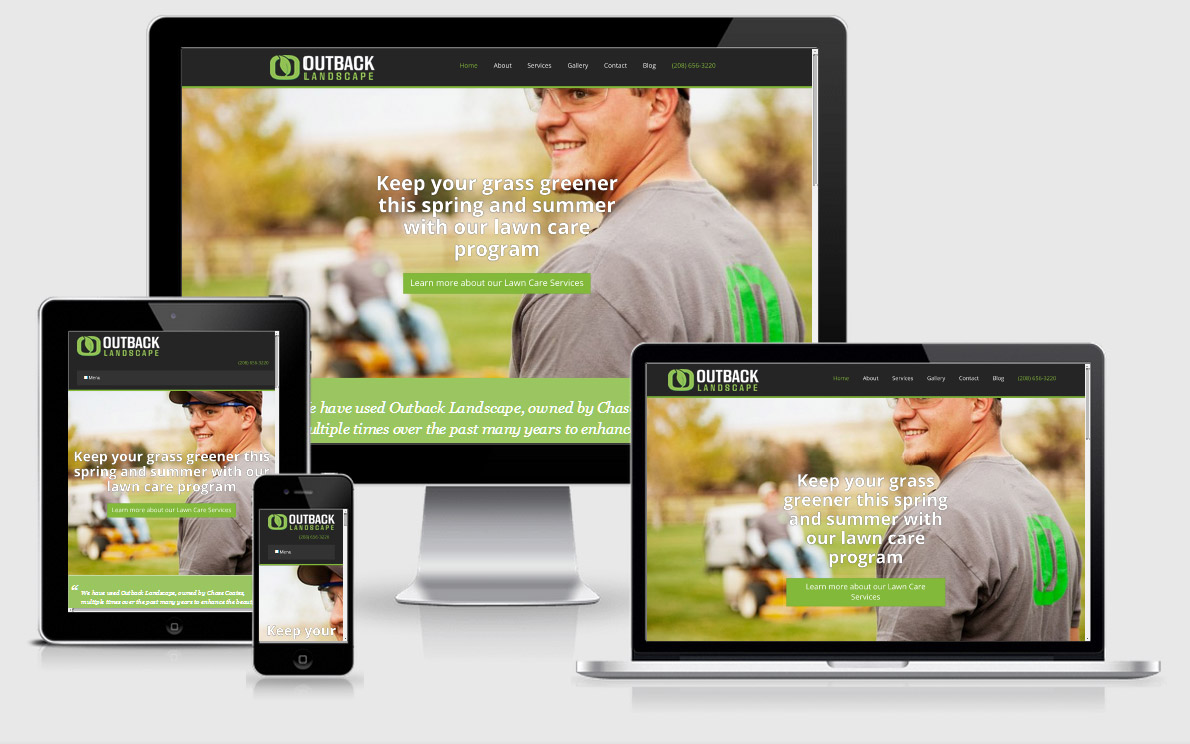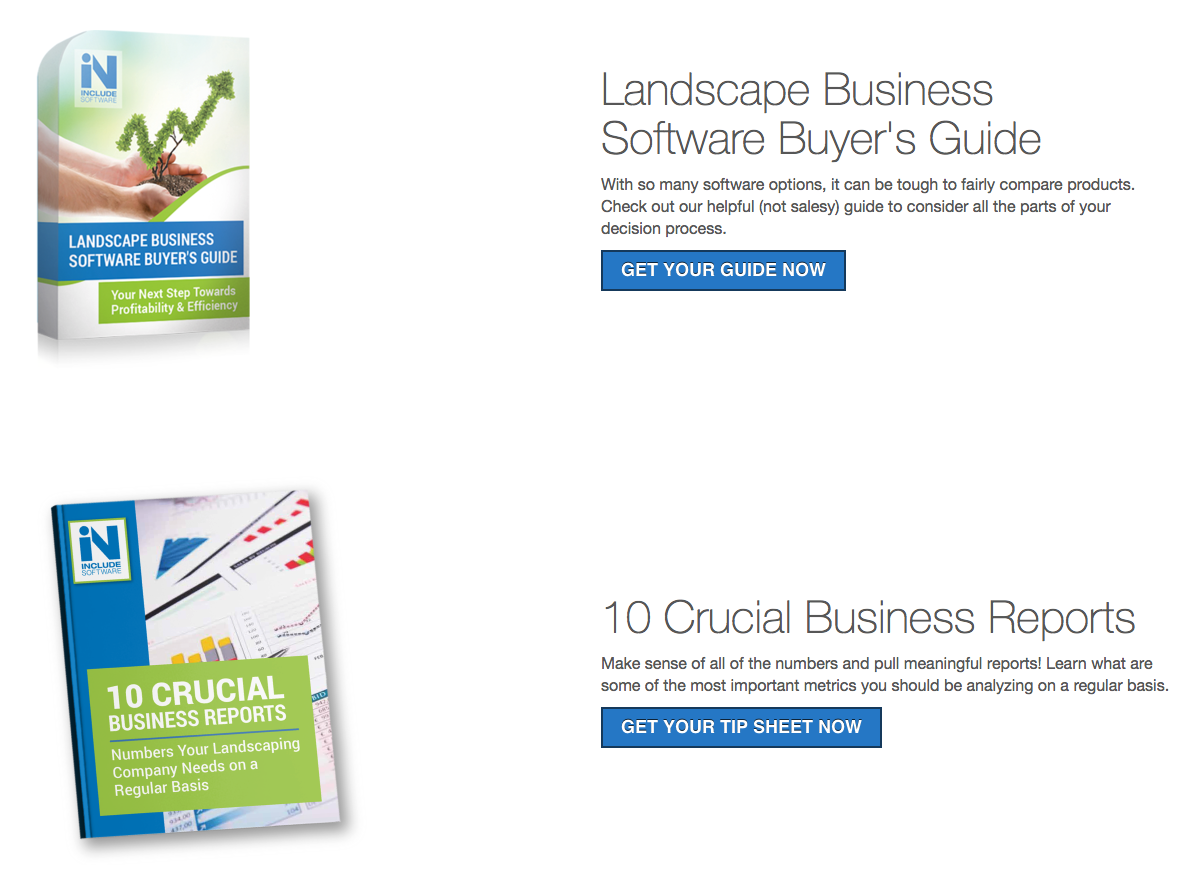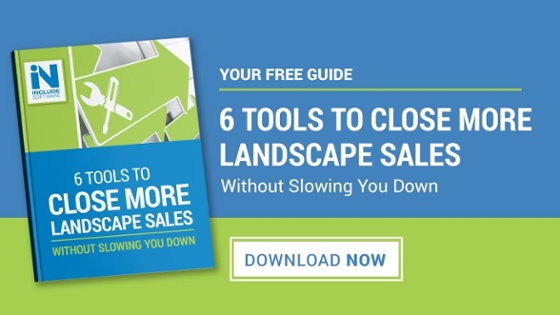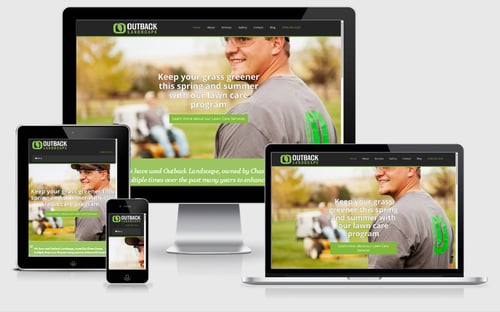 At Include Software, we’ve worked with hundreds of landscape companies and often end up discussing their business needs. Occasionally, we hear a lot of companies are looking at updating or improving their websites.
At Include Software, we’ve worked with hundreds of landscape companies and often end up discussing their business needs. Occasionally, we hear a lot of companies are looking at updating or improving their websites.
This is a smart business move. After all, your website is one of your most important marketing tools. Even if a client finds you somewhere else (like a Facebook ad or even via word-of-mouth), they’re still going to head to your website to check you out.
While you may be great at designing a landscape or a property maintenance program, chances are, you might not know much about website design. You may know it’s important to put together something that will stand out, but you may not be sure how to get started.
We went through a total website redesign ourselves and are seeing a lot of success. But like you, we didn’t have a lot of experience in web design. So we sought help and also learned some things along the way. That’s why we put together this resource. Hopefully imparting some of what we’ve learned through our own experience as well as insights we’ve gathered from our clients in the landscape industry will help simplify the process for you.
If you’re thinking about a website redesign, then here are 6 landscaping website ideas to consider.
1. Where You Build is as Important as What You Build
Since we learned so much with designing our own website, we decided to seek some guidance from the agency that built it.
According to Chad Diller of Landscape Leadership, where you build your website is a crucial detail. You don’t want to be chained to a particular vendor. This is why you should look for an open-source platform such as WordPress or HubSpot.
“What you want to avoid is having someone build your website on a proprietary platform on which they can’t hand over control to you or even another agency if your relationship doesn’t work out,” Diller advises.
There are a lot of website platforms out there, but they’re not all going to be best-suited to your needs. Diller says that other simple “template-based” platforms such as those offered by GoDaddy are also popular, and do give you more control, but are very simplistic in their design options. Some of these platforms are not ideal in terms of SEO as well. These are all factors that must be considered.
Bottom line? Diller says that the platform you choose to build your website on should definitely be given consideration. He also advises having a candid conversation with the agency or person who will be building your website. Don’t be afraid to ask outright: If we decide not to work together and I want someone else to work on my website, what are my limitations? This is important information that you have the right to know.
2. You Get What You Pay For with Landscaping Website Designs
With landscape design, you already know that a customer gets a lot more value when they’re willing to invest a little more. The same is true when it comes to landscaping website design.
You get what you pay for. Truth be told, if you’re not willing to invest much into a website design, you aren’t going to get much out of it. That’s because a website design expert will understand the balance of the intricacies of design and SEO, which are key to your website’s success.
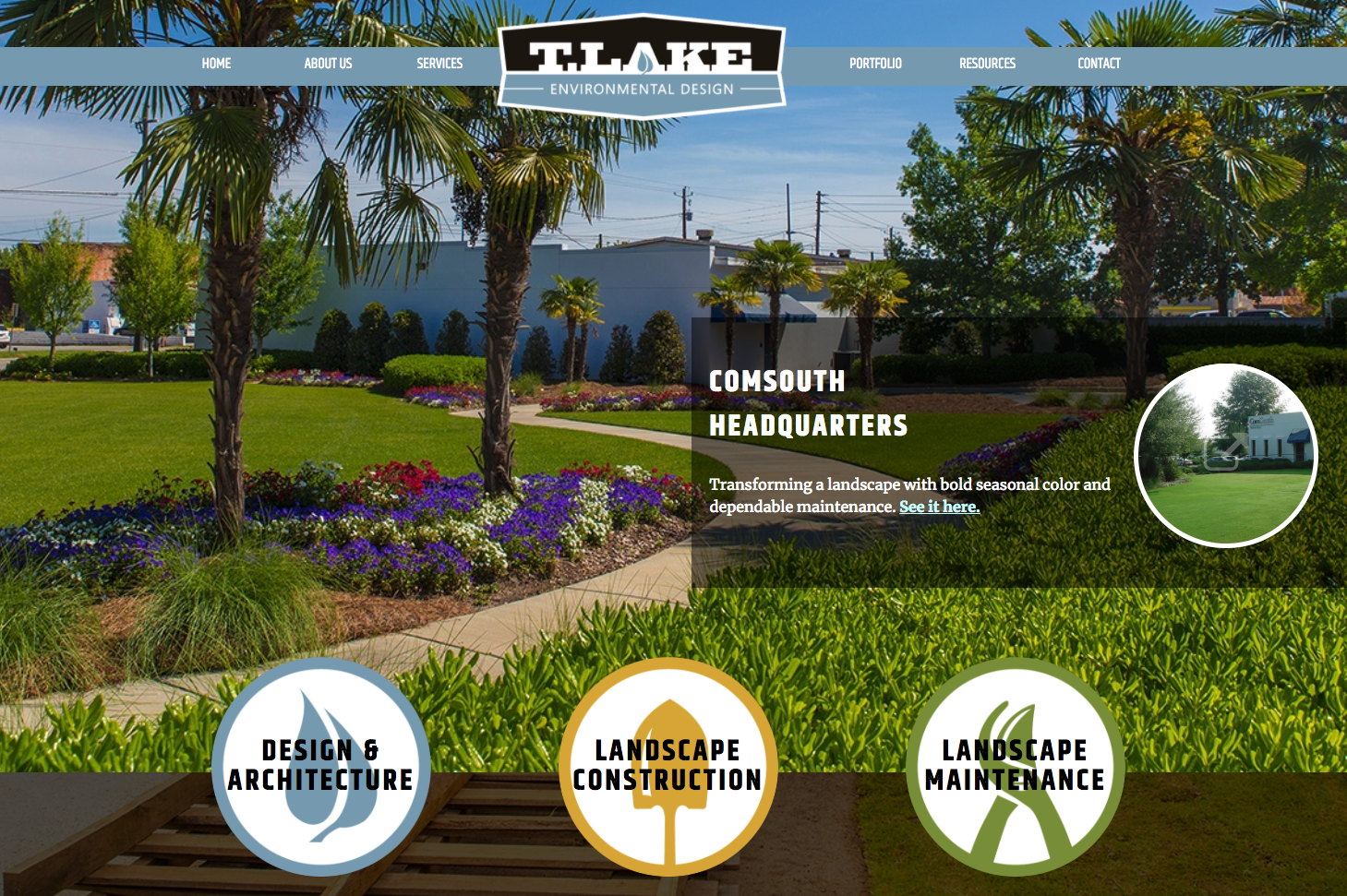
There are good design practices to building a website just as there are these factors for designing and building a landscape. When they’re ignored, things can go awry.
Diller says that SEO is a commonly overlooked but critical factor of website design. Details such as what you name your pages or what kind of content your website is producing make a big difference in how well your website is ranking on search engines. You might have a beautiful website built but if it’s not optimized for search engines, it might not get seen.
SEO can be complicated. But a professional can help provide landscaping website ideas that will help ensure your website is generating the kind of traffic you want.
“A lot of landscapers are very visual in nature and will make choices for their website based on how things look,” Diller says. “That’s obviously important but you always have to keep search engines in mind when designing. A website might be visually beautiful but if it was built with the eyes alone, and not any structure, it’s just not going to be connecting your site with local searchers, which is your main goal.”
An added bonus? Finding a company that has some experience in your industry will help ensure that your content is spot on! If you can find an agency that has a good amount of experience working with Green Industry clients like yourself, it’s going to make the entire process much more streamlined.
That means less hassle for you. Instead of having to constantly be involved in everything from choosing the right kinds of images to ensuring phrasing is technically correct, a company that “gets” your industry will get it right the first time.
3. Embracing Simplicity with Landscaping Website Designs
Because the landscape industry is very technically oriented, there is a tendency to “talk over the heads” of prospective clients. That’s something you need to be very careful to avoid on your website. If visitors don’t understand what they’re reading, they find it confusing, or they get frustrated, they’re going to leave.
But it’s not just written content that can be confusing. Visually speaking, visitors can also get frustrated.
Where green industry websites go wrong is typically when they get busy and confusing. There is just too much going on with the page. It can be a turnoff to the visitor if it seems like your website is complicated to navigate.
When you see 20 different messages in the footer, a busy sidebar, and an overall messy layout of the page, it just looks complicated and you don’t want to go any further. People buy when they can easily understand. They don’t want to work hard to try to figure things out—particularly in the beginning.
4. Center Your Website Experience Around Your Prospect
A key area where companies go wrong is when they make everything about their company. That might sound contradictory—after all, your website is about your company. But prospective clients are seeking you out because they have a problem. They don’t want to hear about all of the awards you’ve won or how great you are as a company. They want to hear about how you are going to help them.

To paraphrase marketing consultant and best-selling author of Building a StoryBrand, Donald Miller, “Companies are notorious for marketing to external problems but customers buy because of internal problems.”
While your website should have information about your company, you also want it to be customer-centric, says Miller. Think in terms of having the customer be at the “center of the journey” or the “hero of the story.”
Your company is there to be the guide to your hero, the customer. You should help them consider their options and gently point them toward a decision. Ultimately, the customer is the hero by choosing an option that ends in success. When you build your website with this in mind, you are much more likely to reach clients on a deeper level. You want them to feel empathy coming from your brand.
According to Miller, you should use authority like salt. To paraphrase: Don’t dump, just sprinkle it. It’s all about building around the customer. Everything from the images you use to the way you write your copy, you should be keeping the customer at the center of it all. When you build your website this way it is very powerful.
You should also be very clear about what you are trying to get across. At Include Software, we honed in on understanding some of the internal reasons why landscape companies would buy landscape business software. We developed “buyer personas” in order to truly understand what makes our clients tick. It’s the same approach landscape companies should take when developing the messaging on their websites. Focus on what really matters to your prospects, not what you hope they want to hear.
From a messaging and a layout standpoint, simplicity is key. Visitors should be able to come to your website and easily find out who you are, what you do, and how to get started. Make the process very easy for them to understand.
5. Landscaping Website Design Should Focus on Lead Conversion
There’s no question that you want a lot of traffic on your website. But you don’t want people to just stop by, you want to actually convert them into a lead. That’s why you need to think about your website in terms of lead conversion—not just as a big online brochure, advises Diller.
“In order to do that, you should think about what you are providing in terms of value to the folks that visit your website,” continues Diller. “Even the very best sites are only getting between two and eight percent of traffic to convert to leads. That means there is a lot of prospective clients there that aren’t ready to request a free consultation just yet. You need to make your website valuable so that they keep coming back.”
This is one of the reasons why we've carefully positioned valuable resources, such as those below, to our prospective clients. This is a tactic that will also work for landscaping websites.
Special content such as e-guides, interactive design tools, pricing calculators, or even insightful blog articles are some ideas on how to offer your visitors value when they’re on your website. This is such that Include Software has chosen to do and we’ve seen success by adding valuable content such as free guides and tip sheets as well as blog articles. Tools such as these will keep your prospects coming back for more as well as diving deeper for more information while they’re on your website.
Also, make sure that you have really great photo galleries. Images are so important to people. It’s not enough to just talk about your work. They want to see it.
Make sure that your galleries are easy to find and easy to navigate—not only on a computer but also on a mobile device. Sometimes galleries are a nightmare to navigate on a phone and that’s a also a big problem.
You might also think about incorporating some good quality video. You don’t have to go overboard, but using video can be a valuable tool. We’ve found that customer testimonial videos are a great touch and will be looking forward to more video production in the future.
“There are some crucial places to incorporate video,” says Diller. “One would be recruitment. A video about the company is a really great tool for people that are looking to work for your company and it comes in handy for people looking to hire your company, too.”
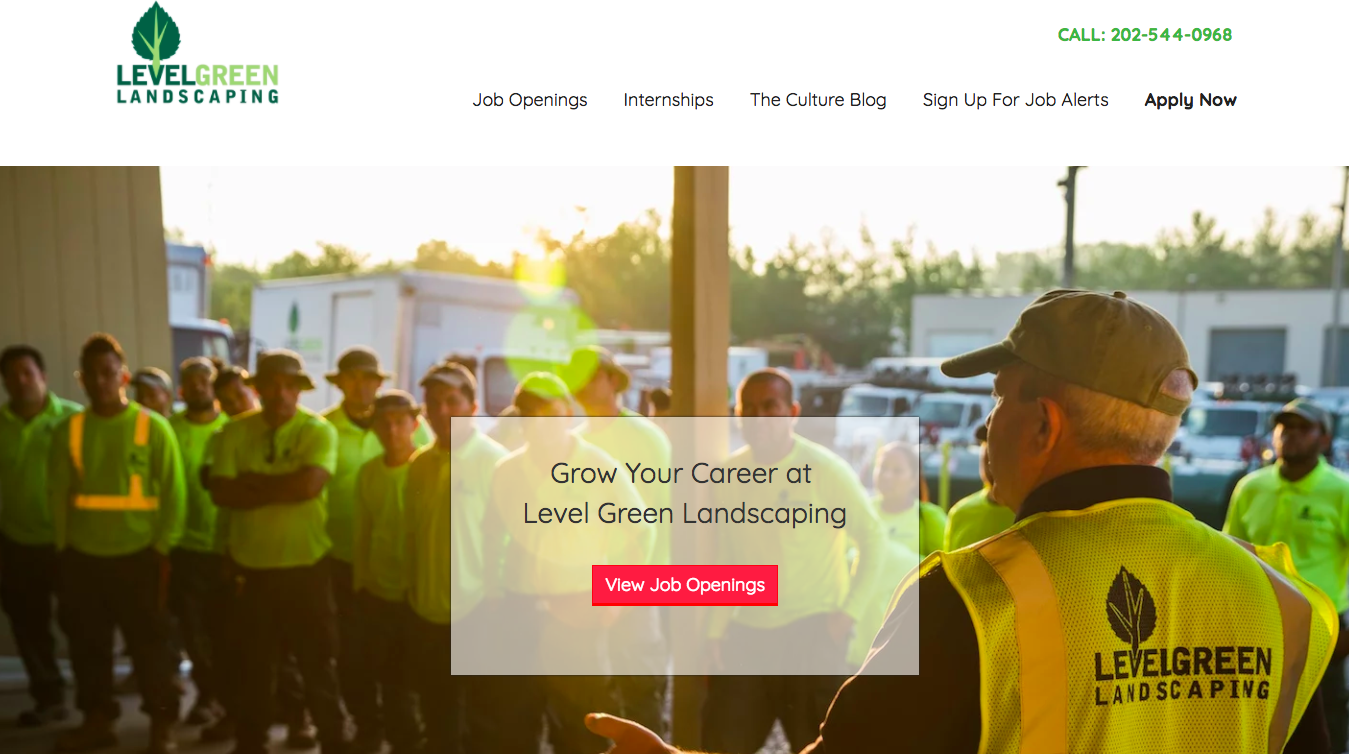
Level Green Landscaping, an Include Software client, is a great example of a company that has done some great work with a Career Center page that incorporates video and valuable content.
Another great area to use high-quality video is with case studies. A one- to two-minute video about a project is perfect.
Just don’t underestimate the value of using a professional for photography and video. Poor quality could do more harm than good.
6. Never Stop Improving
The final point to keep in mind for your website is that it should always be a “work in progress.” That might sound frustrating since it can be a big investment but if you want your website to continue doing generating leads for your company then it must evolve over time.
Though our new website design has increased our success, we’re continuing to invest in website changes this year and even going forward. There are always opportunities to improve and add to your landscaping company website as well.
This also means you should always be adding fresh, new content including blog articles, new images, case studies, and premium content. But beyond that, you should also look to revamp your website every four to six years.
“Even from a technical aspect, platforms and technology are always changing,” Diller says. “If you’re not looking at doing a re-design of your website every four to six years, then your website is going to start to look dated.”
If you let your website get stagnant, then prospective clients are going to make negative assumptions about your company. The last thing that you want is your prime marketing tool to start doing your company any harm. By keeping your website current, you can avoid that.
Providing Resources for your Clients
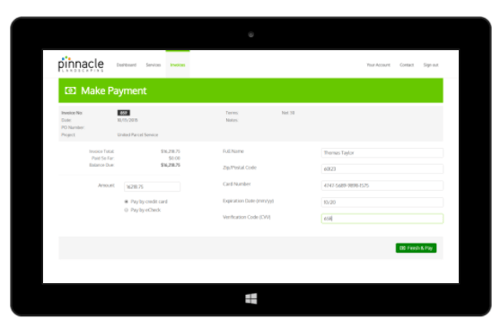 At the end of the day, your website is an excellent multi-faceted resource for your customers. Another resource that many of our clients have implemented is giving their customers access to the Asset Client Portal to help them better understand their upcoming services. This is an additional way to give your clients access to your company regardless of whether it’s “normal” business hours.
At the end of the day, your website is an excellent multi-faceted resource for your customers. Another resource that many of our clients have implemented is giving their customers access to the Asset Client Portal to help them better understand their upcoming services. This is an additional way to give your clients access to your company regardless of whether it’s “normal” business hours.
With Asset Client Portal, your clients can manage their account, pay their bills, view the status of current work, and even add work requests. It’s a tool that we’ve added so that you can do more for your clients.
Being a valuable resource to your prospects and active clients is one of the best ways to grow your business. Whether it’s your website or other valuable tools that you provide them, when they see you as a helpful guide, they will keep coming back for more.
We love when we see landscaping companies take such a thoughtful approach to building their websites. If you want to talk more about how using the right landscape business software can also connect with the resources on your website, give us a call at 800-475-0311 or contact us for a free demo.
Image Sources: Level Green Landscaping, Landscape Leadership, T. Lake Environmental Design,


